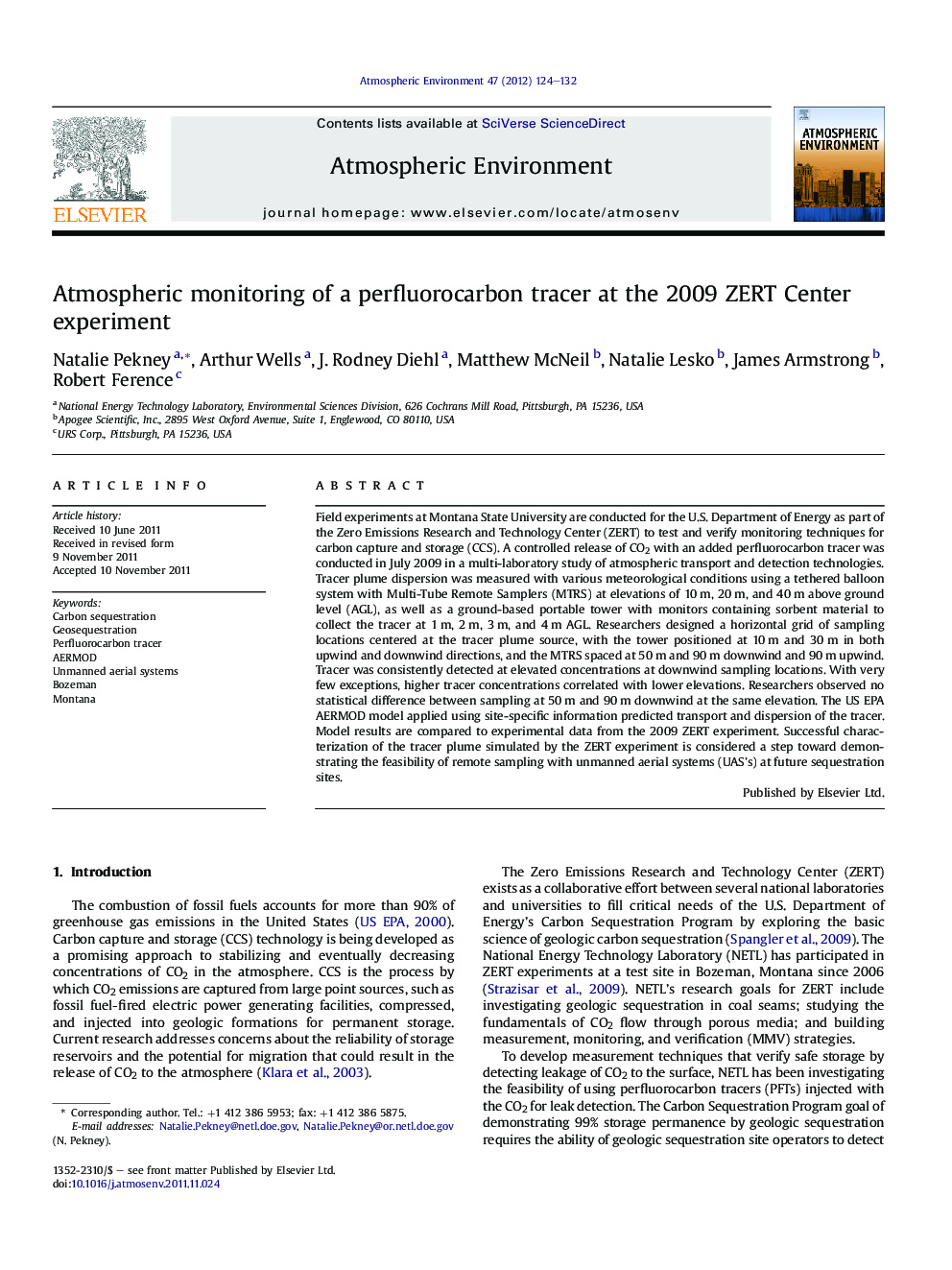| Article ID | Journal | Published Year | Pages | File Type |
|---|---|---|---|---|
| 4438999 | Atmospheric Environment | 2012 | 9 Pages |
Field experiments at Montana State University are conducted for the U.S. Department of Energy as part of the Zero Emissions Research and Technology Center (ZERT) to test and verify monitoring techniques for carbon capture and storage (CCS). A controlled release of CO2 with an added perfluorocarbon tracer was conducted in July 2009 in a multi-laboratory study of atmospheric transport and detection technologies. Tracer plume dispersion was measured with various meteorological conditions using a tethered balloon system with Multi-Tube Remote Samplers (MTRS) at elevations of 10 m, 20 m, and 40 m above ground level (AGL), as well as a ground-based portable tower with monitors containing sorbent material to collect the tracer at 1 m, 2 m, 3 m, and 4 m AGL. Researchers designed a horizontal grid of sampling locations centered at the tracer plume source, with the tower positioned at 10 m and 30 m in both upwind and downwind directions, and the MTRS spaced at 50 m and 90 m downwind and 90 m upwind. Tracer was consistently detected at elevated concentrations at downwind sampling locations. With very few exceptions, higher tracer concentrations correlated with lower elevations. Researchers observed no statistical difference between sampling at 50 m and 90 m downwind at the same elevation. The US EPA AERMOD model applied using site-specific information predicted transport and dispersion of the tracer. Model results are compared to experimental data from the 2009 ZERT experiment. Successful characterization of the tracer plume simulated by the ZERT experiment is considered a step toward demonstrating the feasibility of remote sampling with unmanned aerial systems (UAS’s) at future sequestration sites.
► Perfluorocarbon tracer was co-injected with CO2 at a sequestration testing site. ► Tracer atmospheric dispersion was measured using ground- and aerial-based samplers. ► We observed elevated concentrations at sampling locations downwind of release point. ► AERMOD predicted tracer transport and dispersion with good agreement to measurements. ► This work advances development of monitoring plans for future sequestration sites.
